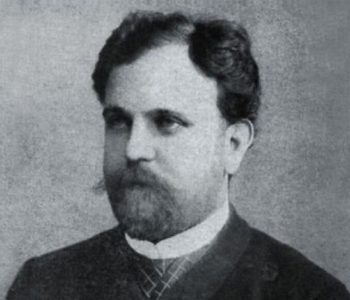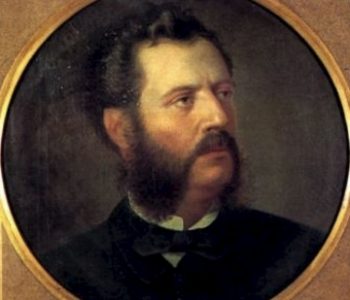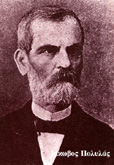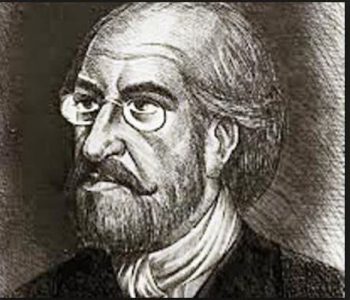
JOURNEY TO GREECE MADE BY SIMONE POMARDI IN 1804, 1805 AND 1806 INCLUDING COPPER TABLES
VOLUME 2
- Chapter 29
- Chapter 30
Introduction by R. Nicolì
In 1804, 1805 and 1806, for eighteen months an Irish aristocrat and talented watercolorist called Edward Dodwell and the Roman painter Simone Pomardi[1], known for his large watercolors of almost always architectural subject depicting Rome and its surroundings, visited Greece. About 900 drawings and watercolors of that journey[2] can still be found and two texts that tell the experience: the one published in 1819 by Dodwell, A Classical and Topographical Tour through Greece during the years 1801, 1805, and 1806 (with drawings by Simone Pomardi), and the one written by Pomardi and published in two volumes at Vincenzo Poggioli Chamber Printer in 1820; for the POLYSEMI Library, we chose and transcribed two chapters strictly pertinent to the Ionian Islands, taken from volume 2.
The drawings, whose presence alongside the texts reflect all the eclecticism typical of a transitional age, caused some disagreement between Dodwelle and Pomardi: the latter in fact, in support of his travel diary, used illustrations by Pietro Parboni rather than those of the Irish friend with whom he shared the Greek experience. The 900 drawings executed by the two travelers offer a testimony of the state of the monuments and archaeological sites in the early years of the nineteenth century – the Athenian acropolis, the Mycenaean monuments, the Corfiot port – when the great excavation campaigns in Greece had not started yet.[3]
Pomardi’s text turns out to be a detailed diary, concerning not only art and archeology but also the territory and the politics of Greece at that time. Text and images, though unrelated in the editorial choices of the author, therefore represent a precious testimony, from which the nostalgia for the ancient grandeur of those lands transpires. Although this work was produced in a more modest way than Dodwell’s, more than the Classical and Topographical Tour it appears to be a practical guide for anyone wishing to repeat that experience, thanks to its careful and useful descriptions of the places.
Pomardi is among the first Italians to interpret the rediscovery of the historical and social world of Greece at the dawn of the nineteenth century, following a path that was certainly trodden by English and French rather than by Italians. Only in the nineteenth century, in fact, the features of that Italian group of pioneers ready to overcome the difficulties of the territory begin to emerge, moving outside the most ‘comfortable’ and usual paths, to visit previously unexplored areas and regions. As you know, it is precisely in Greece that the different faces of historical-archaeological memories are sought and discovered, while the seduction for that natural environment combined with the interest for geography and for the human component of the landscape also is also growing.
If Greece enjoys a privileged place in the European imagination, the Ionian Islands actually have the fortunate geographical position that sees them at the center in the routes out of the Gulf of Corinth, towards the Epirota coastal strip, between the Adriatic and the Ionian Seas, towards Magna Graecia. Anyone wishing to relate to Greece cannot but consider an obligatory passage through the Ionian Islands, due to their natural condition of “door” to the Hellenic world. The descriptions of the Islands represented, on the other hand, a sort of verification of the different approaches to Greece and the classical world: they could be scholarly descriptions of a humanistic imprint, or produced by the evocative vision of a romantic mold, or objective stories of archaeological explorations conducted in the hope to find the treasures of the Mycenaean civilization.
The years in which Pomardi and Dodwell’s journey takes place are those immediately following the short period of French military occupation (1797-1798) and the creation of the three departments of Corcyra , Ithaca and the Aegean Sea. The Ionian Islands had been unified politically with the establishment of the Settinsular Republic , with the support of the English. In the years from 1800 to 1807, those of the journey, the newly formed Republic, with its own constitution and relative autonomy of government, remained formally independent (although in fact politically controlled by Russia and tributed to the Ottoman Empire). The modern identity of the archipelago was thus established with Heptanese . However the Settinsular Republic constituted a fleeting parenthesis since less than two years after Pomardi returned to Italy the islands returned to Napoleonic hands, aggregated to the Illyrian Provinces, and were then progressively occupied by the English and structured, starting from 1815, as a British Protectorate.
In the changed scenario of the early nineteenth century, the Ionian Islands emerge from the shadows becoming not only a center of interest and military confrontation between the European powers, but also a place of intellectual stimulation able to catalyze numerous cultured travelers, romantic adventurers, lovers of antiquity who left travel reports, descriptions, topographical and archaeological surveys. They looked at the islands in the light of the myth of classicism: those are the places described by Homer, these are the Feach and the kingdom of Odysseus. Their interests therefore intersect with the developments of Homeric philology, giving rise to a new interpretation of the landscape, however, devoid of large visible monumental remains, as opposed to the more eastern Greek territory.
Two chapters of the second volume in which the author describes Zante , Ithaca, Lefkas and Corfu were selected from Pomardi’s work. In 1806, the journey is now coming to an end: those are the last stages before returning to Italy.
The stay in Zakynthos, where the artist comes from Corinth, is an obligatory stay due to a long and debilitating fever. He reaches it along the coast that overlooks the gulf, giving also an account of the smallest villages crossed of which he provides various indications, from the historical or mythical origins of the name to their current state, from the natural scenery that surrounds them to the ruins that he finds there. The latter, among others that he does not neglect, is certainly the aspect that most attracts his interest and the guide he uses in the approach to the territories is that of Pausanias. Hence, during an excursion on a mountain in Sicione, he sees the remains of Doric columns, probably belonging to the temple of Fortuna Acrèa and the Dioscuri mentioned by Pausanias. Pomardi’s journey takes the form of a visitation of itineraries of which he seems to know the history, not as a simple exploration of the new. His gaze is directed towards what is left to see according to the canons of the “deserving” established by the authors he knows, most of all Pausanias whom he often mentions. The real and direct experience of Greece evidently exercised an effect of stereotype settling that Pomardi had built, like every traveler.[4]
What often seems to mark the various journeys is the presence / absence of ruins. The crossing of Greece becomes at times the realization of decadence, in which the past is present only with a few disconnected, compromised fragments, from the merciless but natural flow of time and neglect. Pomardi writes direct to Zakynthos: “poco dopo entrammo ad Ipsilocastro, dove non scorgemmo nulla di antico. Ma qualche tempo dopo in una pianura a sinistra della strada trovammo le rovine di un edificio costrutto di pietre grandi con qualche frammento di bassorilievo”; or in the moment of landing in Ithaca, under the Corax cliff “sulla quale veggonsi indizj di antichità”; still leaving the port Vathy, he sees the “rovine di un antico castello, che si chiama di Ulisse” where “scorgonsi molte rovine della stessa costruzione a poligoni”. In Santa Maura, as in Ipsilocastro, he registers his absence, exposing his disappointment at the lack of finding the remains of a castle.
All the pages by Pomardi, of which here we propose only the parts concerning the project area, also contain detailed information on the toponymy of the places, on the climate, on the crops, on the viability of the roads and on history: the reference to the leap of unhappy Saffo from the rocks of Lefkas , but also to contemporary events, such as when he writes: “Nella nostra dimora in Itaca ci fu riferito, che in quella isola si erano ritirati circa duemila uomini proscritti da Aly Bassà dell’Epiro”. What is silenced is perhaps only the description of humanity: neither a hint to the language, very frequent in contemporary travelers, nor a hint about clothing or how to approach the foreigner – only the proscribed informs that “gli abiti de’ loro capi erano molto ricchi, vestendo di velluto, scarlatto, e di altri panni di diversi colori”ì”, for the rest, e.g. the inhabitants, Pomardi supplies at most their number by city.
In the text proposed here, the author, albeit not a writer by training, proves to be sensitive to the spirit of the places, recognizing identity and dignity even for the smallest agglomerations, as if the part of Greece he walks, that he tells, draws had, in each of its corners, a mythical latency.
Note to the text
In order to avoid compromising the epochal color, the digital edition here presented has been faithfully transcribed from the edition printed in 1820. It was considered only to amend some obvious typographical errors (dirca became circa, nella vicine montagne became nelle vicine montagne, un’acquedotto became un acquedotto; in just one case the E was missing an accent, although its being a verb was evident).
-
For Simone Pomardi there is no DBI voice, for some additional information on his biography see: Pier Andrea De Rosa, Simone Pomardi (1757-1830) e la Roma del suo tempo, Artemide, Rome, 2011. ↑
-
About six hundred works are by Pomardi, the rest by Dodwell. Most of the watercolors were purchased in 2002 by the Packard Humanities Institute of California. ↑
-
As for the relationship between artistic conception and journey into the setting of interpretative models of the city and its view, we should remember the collection of essays by Cesare De Seta, the great historian of the Grand Tour, Vedutisti e viaggiatori in Italia tra Settecento e Ottocento, Bollati- Boringhieri , Turin, 1999. ↑
-
On the construction of the idea of East in the various centuries see: A. Brilli, Il viaggio in Oriente , Il Mulino, Bologna 2009 ↑






